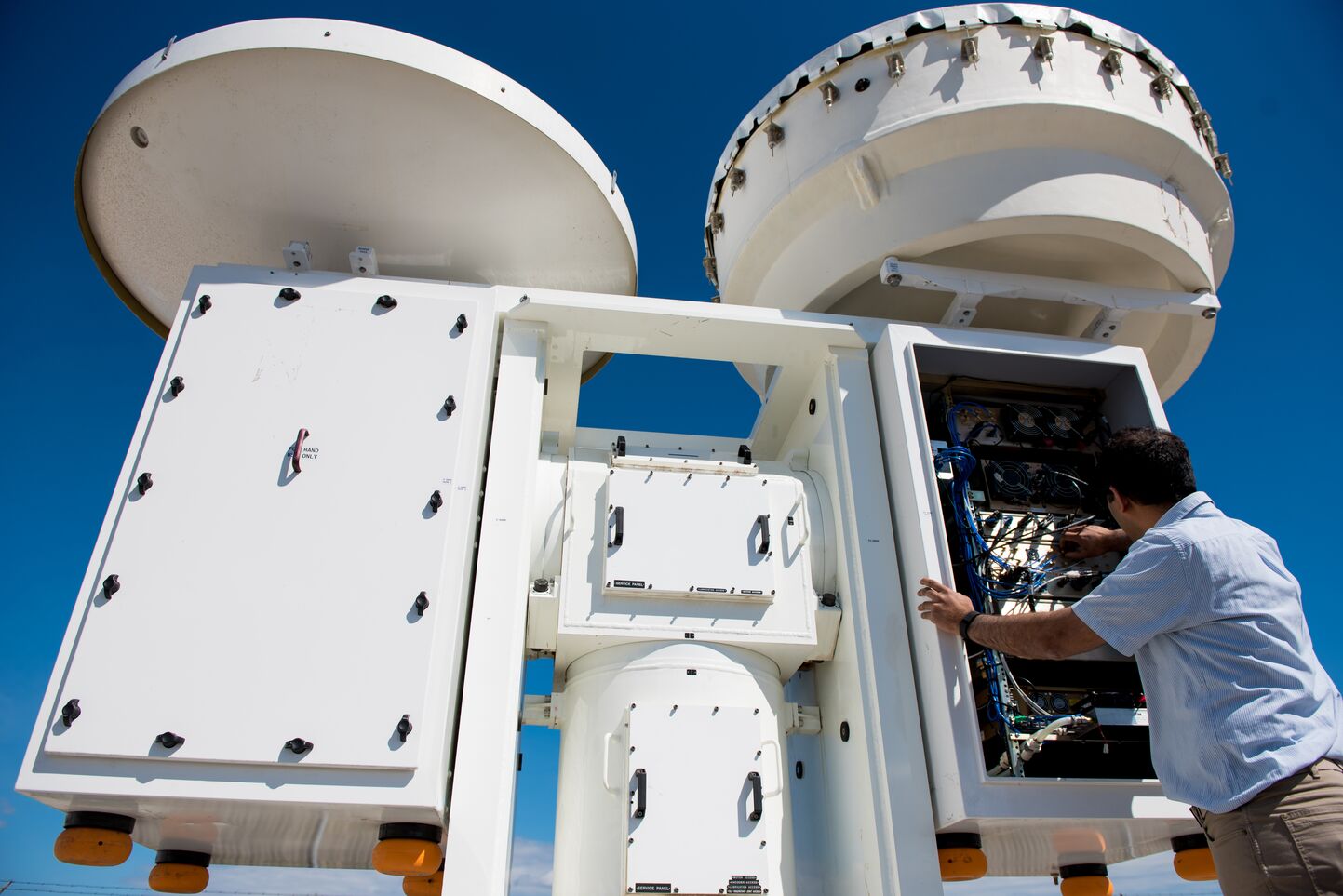Atmospheric, Climate,
and Earth Sciences Division
Atmospheric, Climate,
and Earth Sciences Division
Measurement

Understanding Earth systems—including the land and atmosphere—begins with recording observations and taking measurements, conducting experiments, and analyzing data collected in the laboratory or field. PNNL researchers possess extensive experience leveraging multiple techniques to develop a rich understanding of the atmosphere.
PNNL is an international leader in laboratory studies of atmospheric processes, with one-of-a-kind instruments that scientists use to probe the fundamental properties of gases, aerosol particles, and cloud droplets. Central to these measurement capabilities is the Atmospheric Measurement Laboratory (AML). The AML is one of the nation's leading research facilities for understanding aerosols, clouds, and their interactions. It houses chambers that simulate aerosol and cloud formation, as well as three radar laboratories. Additional key instrumentation is located in and managed by the Environmental Molecular Sciences Laboratory (EMSL).
PNNL scientists lead and participate in a broad range of national and international field research campaigns that aim to improve scientific understanding of the atmosphere and related Earth systems. Much of this work makes use of measurements provided by the Atmospheric Radiation Measurement (ARM) user facility. Some of the work at the AML is focused on supporting ARM instruments, including preparing cloud radars for field deployments. PNNL staff manage and operate the ARM Aerial Facility, with its hangar located near the PNNL-Richland campus, that includes both piloted and uncrewed aerial platforms.
In addition to answering fundamental science questions about the atmosphere, PNNL researchers aim to use insights gleaned from measurements to improve models of Earth systems. Better models improve the accuracy of long-term climate projections, helping our nation develop sustainable solutions to energy and environmental challenges.